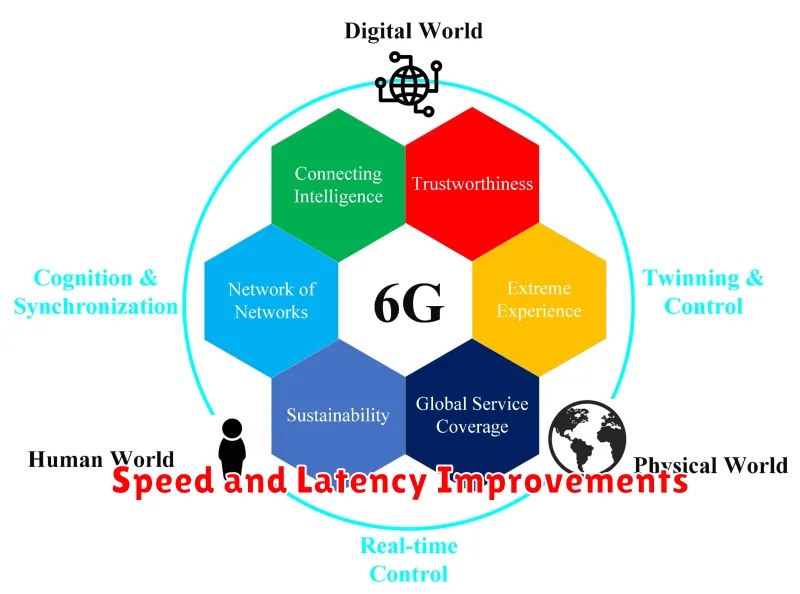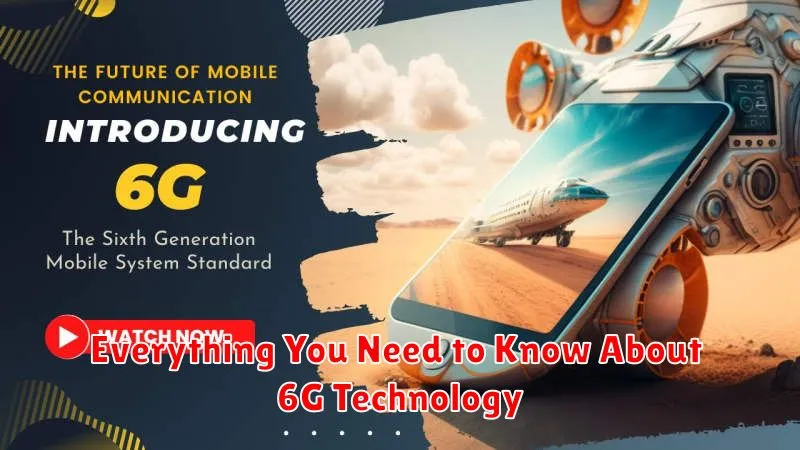The world is rapidly evolving, and with it, the technology that powers our lives. While 5G is still rolling out globally, the horizon of innovation beckons with the promise of 6G technology. This next generation of wireless communication holds the potential to revolutionize everything from how we connect and communicate to how industries operate, promising unprecedented speeds, lower latency, and enhanced reliability. This comprehensive guide will delve into everything you need to know about 6G, exploring its potential impact, the ongoing research and development, and the anticipated timeline for its deployment.
From the futuristic applications of the 6G network, such as holographic communication and immersive extended reality (XR) experiences, to the challenges that lie ahead in realizing this ambitious vision, we will explore the transformative potential of 6G. Understanding the fundamentals of 6G technology, including the core technologies like terahertz communication and artificial intelligence (AI) integration, is crucial for grasping its significance. This article provides a valuable resource for anyone seeking to stay ahead of the curve in the ever-advancing world of telecommunications and understand the impending dawn of the 6G era.
What Is 6G and How Will It Work?
6G is the sixth generation of wireless technology, succeeding 5G. While still largely theoretical, 6G aims to drastically improve upon 5G performance. This includes significantly faster speeds, lower latency, and increased bandwidth.
6G is expected to utilize higher frequencies than 5G, like the terahertz (THz) spectrum. This allows for vastly more data transmission. Additionally, 6G will likely incorporate advanced technologies such as artificial intelligence (AI) and machine learning to optimize network efficiency and provide new capabilities.
Speed and Latency Improvements

6G technology promises a significant leap in both speed and latency compared to its predecessor, 5G. Peak data rates are projected to reach up to 1 terabit per second (Tbps), enabling incredibly fast downloads and seamless streaming of high-resolution content. This represents a substantial increase over 5G’s theoretical maximum of 20 gigabits per second (Gbps).
Moreover, 6G aims to reduce latency to under 1 millisecond. This near-instantaneous responsiveness will be crucial for applications requiring real-time interaction, such as remote surgery, autonomous vehicles, and augmented reality experiences. The ultra-low latency will further enhance the performance and responsiveness of connected devices, fostering a truly immersive and interconnected world.
Potential Use Cases in 2030+
By the 2030s, 6G technology is projected to unlock a plethora of transformative applications. Extended Reality (XR) experiences, encompassing virtual, augmented, and mixed reality, will become seamlessly integrated into daily life, powered by 6G’s high bandwidth and low latency. This could revolutionize fields like education, entertainment, and remote collaboration.
Real-time holographic communication may become commonplace, blurring the lines between physical and digital interactions. The Internet of Senses (IoS), connecting digital devices to our senses, could emerge, enabled by 6G’s ability to transmit massive amounts of sensory data. This could lead to innovations in areas such as healthcare, manufacturing, and personalized experiences.
Furthermore, 6G’s extremely high data rates will be crucial for the development of sophisticated digital twins of physical objects and environments, enabling more precise simulations and predictions. This could revolutionize areas like urban planning, disaster management, and scientific research.
AI and IoT Integration
6G is poised to revolutionize the interplay between Artificial Intelligence (AI) and the Internet of Things (IoT). The significantly enhanced speed and reduced latency of 6G create an environment where AI algorithms can process vast quantities of data generated by IoT devices in near real-time.
This synergy unlocks advanced capabilities, enabling more sophisticated and responsive IoT applications. Think of smart cities that dynamically adjust traffic flow based on real-time conditions, or manufacturing plants where AI-powered predictive maintenance prevents costly downtime. The integration of AI and IoT within a 6G framework promises a future of truly interconnected and intelligent systems.
Challenges in Implementation
While 6G promises groundbreaking advancements, its implementation faces significant hurdles. Technological development is paramount, requiring breakthroughs in areas like terahertz communication and advanced antenna systems.
Infrastructure presents another major challenge. Deploying a dense network of small cells and base stations necessary for 6G coverage will be a complex and costly undertaking.
Spectrum allocation is crucial. Identifying and allocating the necessary radio frequencies for 6G operation requires international cooperation and regulatory frameworks.
Security and privacy concerns are also significant. Ensuring the security and integrity of 6G networks and user data is vital.
When Will 6G Be Available?
While 5G is still rolling out globally, the development of 6G is already underway. Pinpointing an exact release date for 6G is difficult, as the technology is still in its early research and development phase. However, experts predict a commercial launch sometime in the late 2020s or early 2030s.
Several factors will influence the timeline, including the pace of technological advancements, standardization processes, and spectrum allocation. Standardization is a crucial step, ensuring interoperability between devices and networks. Spectrum allocation, the process of assigning radio frequencies for 6G operation, is another critical aspect that will impact the rollout schedule.

